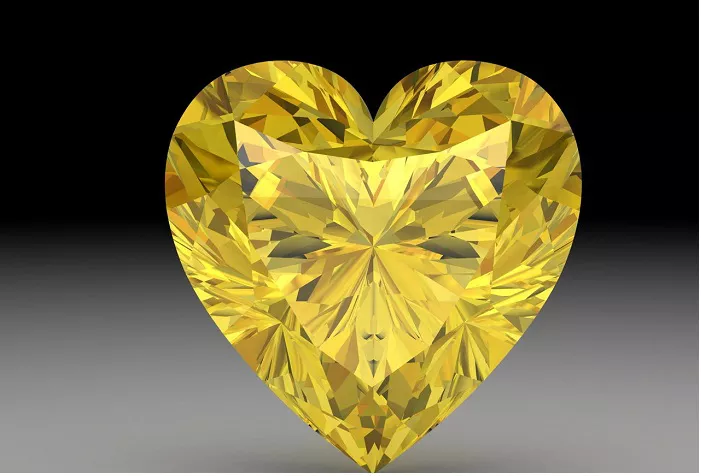When it comes to buying sapphires, many people are captivated by their beauty and the rich colors they can display. However, not all sapphires are created equal. One treatment that has gained popularity in recent years is beryllium treatment. This article will explore what beryllium-treated sapphires are, how they differ from untreated stones, and what you should consider before making a purchase.
Understanding Beryllium Treatment
What Is Beryllium Treatment?
Beryllium treatment involves the application of beryllium to sapphires to enhance their color. This process allows lighter-colored sapphires to take on vibrant hues, such as vivid blue or yellow, which may not be achievable in their natural state. The treatment works by infusing the beryllium into the stone at high temperatures, allowing the gem to absorb the color-enhancing element.
How Is It Done?
The beryllium treatment process typically involves several steps:
Preparation: The sapphire is cleaned and prepared for treatment.
Heating: The stone is heated to high temperatures in the presence of beryllium.
Cooling: After the treatment, the stone is allowed to cool, locking in the new colors.
This process can produce strikingly beautiful sapphires, making them appealing to consumers.
Identifying Beryllium Treated Sapphires
Certification and Disclosure
When purchasing sapphires, it’s crucial to ask for certification. Reputable sellers will provide documentation indicating whether a sapphire has been treated and, if so, the type of treatment applied. The Gemological Institute of America (GIA) and other reputable laboratories can certify gemstones and disclose any treatments they have undergone.
Visual Inspection
While some beryllium-treated sapphires can be indistinguishable from their untreated counterparts, others may exhibit color zoning or unusual color patterns. Knowledgeable gemologists can help identify these features, so consider consulting an expert before making a purchase.
Advantages of Beryllium Treated Sapphires
Enhanced Color
One of the main advantages of beryllium-treated sapphires is their vivid color. The treatment can significantly enhance the hue, making the gemstones more attractive to potential buyers. If you’re looking for a strikingly beautiful sapphire, a beryllium-treated option may be worth considering.
Cost-Effectiveness
Beryllium-treated sapphires are often more affordable than untreated stones. The enhancement process allows these sapphires to compete in the market with higher-priced natural stones. If you are on a budget but still want a beautiful gemstone, a treated sapphire could be an appealing choice.
Availability
Treated sapphires are more readily available than untreated ones, especially in specific colors. If you’re looking for a unique shade or hue, you may find that beryllium-treated sapphires offer a broader range of options.
Disadvantages of Beryllium Treated Sapphires
Value and Resale Considerations
One of the most significant drawbacks of beryllium-treated sapphires is their resale value. Since the treatment is known to reduce the intrinsic value of the stone, beryllium-treated sapphires typically have lower resale prices compared to untreated ones. If you plan to sell your gemstone in the future, this is an essential factor to consider.
Potential Misrepresentation
Unfortunately, not all sellers disclose that a sapphire has undergone beryllium treatment. This lack of transparency can lead to buyers overpaying for stones that do not have the value they assume. Always purchase from reputable dealers and request certification to avoid being misled.
Durability Concerns
While beryllium treatment enhances the color of sapphires, some experts express concerns about the durability of treated stones. The treatment process can potentially affect the stone’s structure, leading to questions about how well it will hold up over time. Make sure to discuss these concerns with your jeweler or gemologist.
Care and Maintenance
Proper Cleaning Techniques
Caring for beryllium-treated sapphires is similar to caring for untreated stones, but it’s essential to be gentle. Here are some tips for cleaning:
Use warm, soapy water and a soft brush to clean the stone.
Avoid harsh chemicals or ultrasonic cleaners, as they may damage the treatment.
Storing Your Sapphire
When storing your sapphire, keep it in a soft pouch or a separate compartment in your jewelry box to prevent scratches from other gemstones. Also, consider avoiding exposure to extreme temperatures or harsh environments, which can affect the stone’s appearance.
Conclusion: Make an Informed Choice
Beryllium-treated sapphires can be a beautiful addition to any jewelry collection. They offer vibrant colors at more accessible price points, making them attractive for many buyers. However, it’s essential to be informed about the treatments and potential implications for value and durability.
Before purchasing, ensure you understand what you’re buying. Ask for certification, consider the resale implications, and consult with gemologists or reputable jewelers. By taking these steps, you can confidently choose a sapphire that suits your style and budget.
Whether you decide on a beryllium-treated sapphire or an untreated one, remember that the beauty of the gem lies in its ability to capture light and sparkle, reflecting your unique personality and taste. Happy gem hunting!
Related topic:
- The Benefits of Wearing Yellow Sapphire and Ruby Together
- Yellow Sapphire: The Perfect Partner For an Unmarried Girl
- How to Determine If Yellow Sapphire Is Your Perfect Gemstone


